Oleander Oil
$19.90
Oleander is one of the most poisonous plants and contains numerous toxic compounds, many of which can be deadly to people, especially young children. The toxicity of Oleander is considered extremely high and it has been reported that in some cases only a small amount had lethal or near lethal effect….
Only 1 left in stock
Although Italian magical thought says that keeping any part of an Oleander in the house brings sickness, disgrace and misfortune of every kind to its inhabitants, Oleander is occasionally used in love spells, but never internally.
Gender: Feminine
Planet: Saturn
Element: Earth
This an oil that is representative of Oleander, and is therefore NOT toxic. You may use it in all common spell work where you need Oleander’s energy and not worry about toxicity. It smells beautiful, and THIS oil can actually be worn.But please read below about the actual plant – it is a very dangerous being, indeed.
Folk Names: Adelfa, Alheli Extranjero, Balandre, Espirradeira, Flor de Sao Jose, Laurel de Jardin, Laurel Rosa, Laurier Rose, Flourier Rose, Olean, Aiwa, Rosa Francesca, Rosa Laurel, Rose Bay, Dog Bane, Ceylon Tree
Folklore and History: Its name was derived from the old latin name for flower used first in the ancient city of Volubilis in Morocco. Pliny the Elder wrote in 77 CE that despite its toxicity was a effective snakebite cure if taken in wine with rue. Historically used in Mesopotamia 15th c. BCE for healing; Babylonians mixed oleander with licorice to treat hangovers, and Arab physicians used it as a cancer treatment as early as 8th century CE. The Bible refers to Oleander as “the Desert Rose”.
Although Italian magical thought says that keeping any part of an Oleander in the house brings sickness, disgrace and misfortune of every kind to its inhabitants, Oleander is occasionally used in love spells, but never internally.
The actual plant is NOT recommended for burning, but for use in satchels and herb sprinkling, can be powerful protectant, purifier, and ward off all negativity. It is occasionally added to love spells. Generally it is held that having oleander in the home brings sickness, disgrace and misfortune of all types to the inhabitants.
Poisonous sap provide ties to Dark magic. Oleander, while possessing one of the most toxic saps found in plants, has the potential to make a strong wand for Healing and Potions work, especially concerning the brewing of antidotes. Typically does better with a cautious and thoughtful user, the wood is powerful but has the potential to do great harm as well as good. In China, the oleander is associated with beauty and grace.
Protection spell:
To protect oneself from negative energy, take a small white bag; place a small piece of smoky quartz and one of clear quartz inside. Take five leaves of oleander and add them to the bag, being extremely careful not to get any sap on you. If you do come in contact with the sap, remember that it is highly toxic, so wash up immediately and thoroughly. Handling the leaves with rubber gloves is not a bad idea. Anoint the bag with Frankincense oil, saying:
“Minions of the Dark now quit this place,
For only Light will I embrace.”
Do this during the waning phases of the Moon, visualizing your surroundings being filled with a pure, white and golden light, driving out any darkness from every corner. At the New Moon, burn the bag, being careful to be upwind of the smoke. Remember: Oleander is deadly. Be very careful!
Oleander (Nerium oleander), is a evergreen shrub or small tree in the dogbane family Apocynaceae. It is the only species currently classified in the genus Nerium. Other names include Adelfa, Alheli Extranjero, Baladre, Espirradeira, Flor de São Jose, Laurel de jardín, Laurel rosa, Laurier rose, Flourier rose, Olean, Aiwa, Rosa Francesca, Rosa Laurel, and Rose-bay (Inchem 2005); in Chinese it is known as 夹竹桃 (jia zhu tao). The ancient city of Volubilis in North Africa took its name from the old Latin name for the flower.
It is native to a broad area from Morocco and Portugal eastward through the Mediterranean region and southern Asia to Yunnan in southern China (Flora Europaea; Flora of China; Huxley et al. 1992; www.inchem.org). It typically occurs around dry stream beds. It grows to 2-6 m tall, with spreading to erect branches. The leaves are in pairs or whorls of three, thick and leathery, dark green, narrow lanceolate, 5-21 cm long and 1-3.5 cm broad, and with an entire margin. The flowers grow in clusters at the end of each branch; they are white, pink or yellow, 2.5-5 cm diameter, with a deeply 5-lobed corolla with a fringe round the central corolla tube. They are often, but not always, sweetly scented. The fruit is a long narrow capsule 5-23 cm long, which splits open at maturity to release numerous downy seeds.
In the past, scented plants were sometimes treated as a distinct species N. odorum, but the character is not constant and it is no longer regarded as a separate taxon.
Cultivation and uses
Oleander grows well in warm subtropical regions, where it is extensively used as an ornamental plant in landscapes, parks, and along roadsides. It is drought tolerant and will tolerate occasional light frost down to -10°C (Huxley et al. 1992). It can also be grown in cooler climates in greenhouses, conservatories, or as indoor plants that summer outside. Oleander flowers are showy and fragrant and are grown for these reasons. Over 400 cultivars have been named, with several additional flower colours not found in wild plants having been selected, including red, purple and orange; white and a variety of pinks are the most common. Many cultivars also have double flowers.
Ethnomedical Uses
Records of the medicinal use of oleander date back at least 3500 years. The Mesopotamians in the 15th century BC believed in the healing properties of oleander and the ancient Babylonians used a mixture of oleander and licorice to treat hangovers. Roman soldiers also regularly took an oleander extract for hangovers. Pliny, the Elder of ancient Greece, wrote about the appearance and properties of oleander. Arab physicians first used oleander as a cancer treatment in the 8th century AD.
Centuries later, in the 1633 edition of “The Herbal, or General History of Plants”, the author John Gerard says of oleander: “This tree being outwardly applied, as Galen saith, hath a digesting faculty; but if it be inwardly taken it is deadly and poisonsome, not only to men, but also to most kinds of beasts. The flowers and leaves kill dogs, asses, mules, and very many of other four footed beasts: but if men drink them in wine they are a remedy against the bitings of Serpents, and the rather if Rue be added. The weaker sort of cattle, as sheep and goats, if they drink the water wherein the leaves have been steeped, are sure to die.” which indicates knowledge that the raw plant is poisonous, but that extracts of the plant were used medicinally. An oleander extract much like the home remedy known as “oleander soup” is most likely the magic healing potion that led to the witchcraft accusation against Rebecca, the beautiful Jewish woman from the Holy Land, in Sir Walter Scott’s “Ivanhoe”.
In recent centuries, oleander has continued to be used in folk remedies and in commercial preparations. In 1966 Doctor H. Z. Ozel in Turkey in 1966 re-discovered a centuries old oleander extract remedy, which he later refined and patented as Anvirzel, which he has used with great success for the past 40 years in treating cancer and other cell proliferative diseases. Nerium oleander extract and Anvirzel have been the subject of numerous trials and studies, most notably those led by MD Anderson researcher Doctor Robert Newman, and Anvirzel has passed US FDA phase I trials.
In European studies in the 1980s, the nerium oleander extract was found to have six times the immune stimulating activity of the most powerful patented immune stimulators.
The home-remedy version of nerium oleander extract is modeled after Doctor Ozel’s patent for Anvirzel and is called “oleander soup”. This remedy is used to treat cancer, hepatitis-C, psoriasis, HIV and other conditions, and is made by precise directions for boiling, condensing and straining according to the recipe for making the soup which is available on the internet as well as in published form. When further condensed and made into a skin creme, the remedy is used to get rid of warts, moles, age spots and pre-cancerous lesions.
Oleander leaf extract is also taken to treat congestive heart disease. No one should attempt to make their own oleander remedy without precise directions and oleander should only be taken after consultation with an experienced herbalist and physician because it is a highly toxic poison in raw form that may be lethal to humans and animals in even doses as small as one leaf.
Toxicity
Oleander is one of the most poisonous plants and contains numerous toxic compounds, many of which can be deadly to people, especially young children. The toxicity of Oleander is considered extremely high and it has been reported that in some cases only a small amount had lethal or near lethal effects (Goetz 1998). The most significant of these toxins are oleandrin and neriine, which are cardiac glycosides (Goetz 1998). “Cardiac glycocides are naturally occurring” plant or animal compounds “whose actions include both beneficial and toxic effects on the heart” (Desai 2000). They are present in all parts of the plant, but are most concentrated in the sap. It is thought that Oleander may contain many other unknown or un-researched compounds that may have dangerous effects (Inchem 2005). Oleander bark contains rosagenin which is known for its strychnine-like effects. The entire plant including the milky white sap is toxic and any part can cause an adverse reaction. Oleander is also known to hold its toxicity even after drying. It is thought that a handful or 10-20 leaves consumed by an adult can cause an adverse reaction, and a single leaf could be lethal to an infant or child. According to the Toxic Exposure Surveillance System (TESS) in 2002 there were 847 known human poisonings in the United States related to Oleander (Watson 2003). In animals, around 0.5 mg per kilogram of body weight is lethal to many animals, and various other doses will affect other animals (Inchem 2005). Most animals can suffer a reaction or death from this plant.
Effects of poisoning
Reactions to this plant are as follows. Ingestion can cause both gastrointestinal and cardiac effects. The gastrointestinal effects can consist of nausea and vomiting, excess salivation, abdominal pain, diarrhea that may or may not contain blood, and especially in horses, colic (Inchem 2005). Cardiac reactions consist of irregular heart rate, sometimes characterized by a racing heart at first that then slows to below normal further along in the reaction. The heart may also beat erratically with no sign of a specific rhythm. Extremities may become pale and cold due to poor or irregular circulation (Goetz 1998). Reactions to poisonings from this plant can also affect the central nervous system. These symptoms can include drowsiness, tremors or shaking of the muscles, seizures, collapse, and even coma that can lead to death (Goetz 1998). Oleander sap can cause skin irritations, severe eye inflammation and irritation, and allergy reactions characterized by dermatitis (Goetz 1998).
Medical treatment required
Poisoning and reactions to Oleander plants are evident quickly, requiring immediate medical care in suspected or known poisonings of both humans and animals (Goetz 1998). Induced vomiting and gastric lavage are protective measures to reduce absorption of the toxic compounds. Charcoal may also be administered to help absorb any remaining toxins (Inchem 2005). Further medical attention may be required and will depend on the severity of the poisoning and symptoms.
Drying of plant materials does not eliminate the toxins. It is also hazardous for animals such as sheep, horses, cattle, and other grazing animals, with as little as 100 g being enough to kill an adult horse (Knight 1999). Plant clippings are especially dangerous to horses, as they are sweet. Symptoms of a poisoned horse include severe diarrhea and abnormal heartbeat. There are a wide range of toxins and secondary compounds within Oleander, and care should be taken around this plant due to its toxic nature. Different names for Oleander are used around the world in different locations (see top of page); so when encountering a plant with this appearance, regardless of the name used for it, exercise great care and caution to avoid ingestion of any part of the plant, including its sap and dried leaves or twigs. Do not use the dried or fresh branches for spearing food, in preparing a cooking fire, or as a food skewer. Many of the Oleander relatives, such as the Desert Rose (Adenium obesum) found in East Africa, have similar leaves and flowers and are equally toxic.
Trunk oil
While the reasons are unknown, some visibly healthy oleander shrubs that have become sick or otherwise diseased may generate a type of oil from the trunk and shallow roots. Depending upon the size of the shrub, the oil quantity can vary greatly and has the capability to saturate the soil in its vicinity as the shrub’s sickness progresses. This is possibly an explanation for the plant’s name of “Olea”, whose Latin translation is “oil”. The oil is light-brown colored and possesses a rancid scent. The toxicity of the oil is unknown, because the neuro-toxic chemicals in the rest of the tree come from the leave’s vein-system and not from the actual pulp surrounding these veins. There is even a species of large, green caterpillar who feeds specifically on oleanders and survives by eating only the pulp surrounding the leaf-veins, avoiding the fibers.
info from: http://herbalriot.tumblr.com/search/oleander
1/2 oz. bottle
| Weight | 0.2 lbs |
|---|
Only logged in customers who have purchased this product may leave a review.

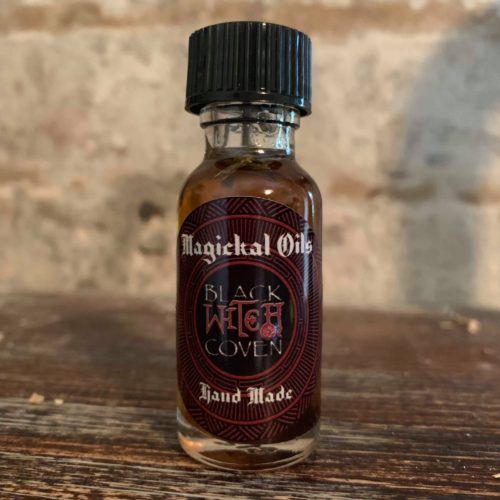
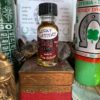

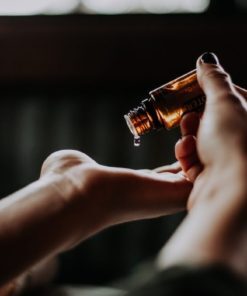
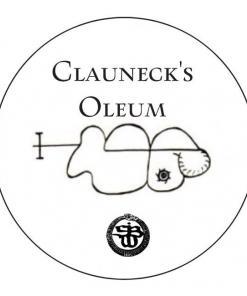


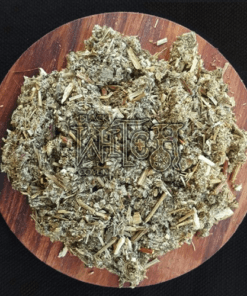
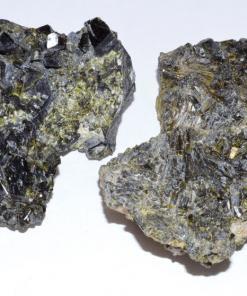
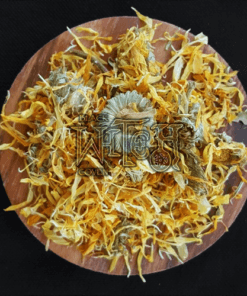
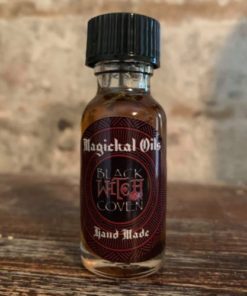
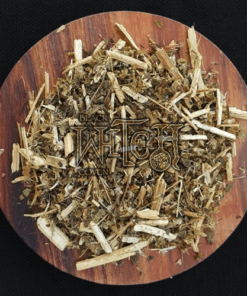

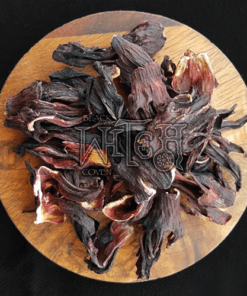
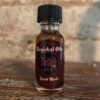
Reviews
There are no reviews yet.